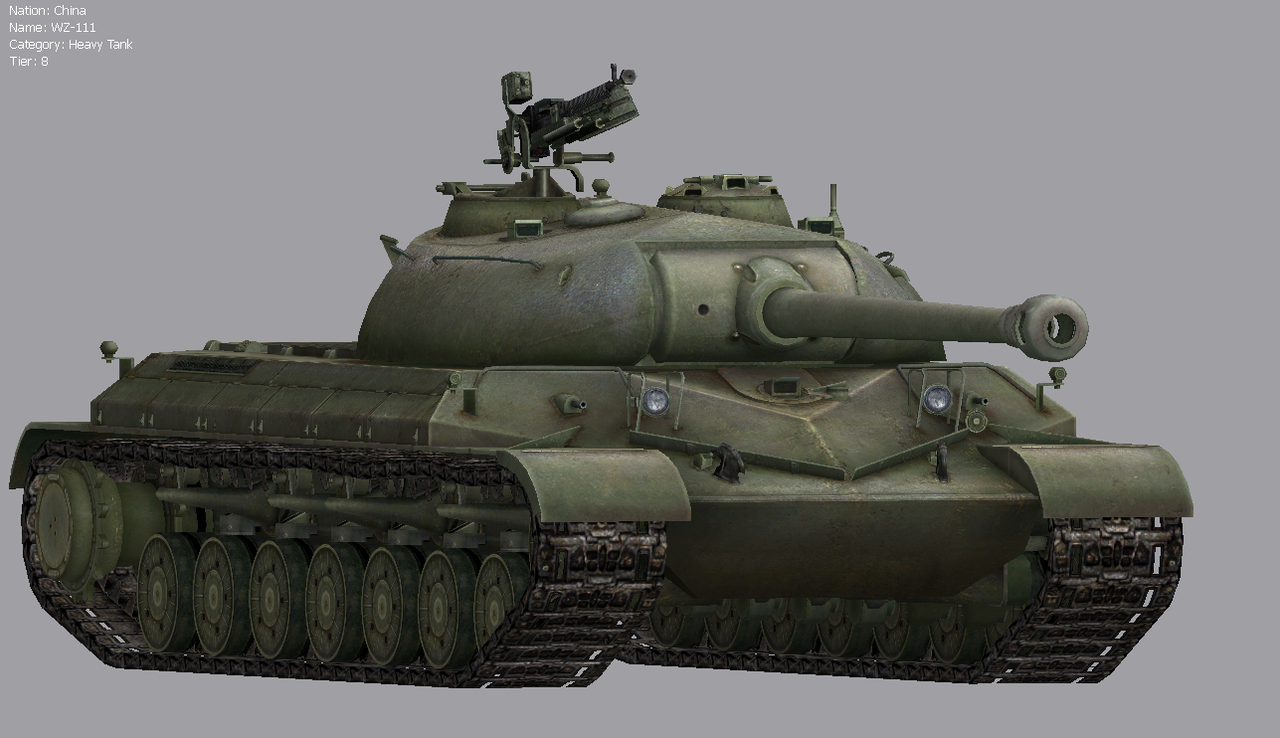
First off is the WZ-111, a IS-3 like tank with a pike nose and strong frontal armor similar to our current WZ-111 1-4. This tanks piked nose,(Not identical to the IS-3, which allows some angling of the hull) gives this tank good frontal hull armour, and this vehicle has great terrain resistance which allows it to get to top speed quickly, also while having a high top speed. This tank uses the D-25TA 122mm gun, this gun has great alpha, but has mediocre penetration, similar to the 112. The accuracy is subpar and has a long aiming time, however enhanced gun laying drive and Vertical Stabilizer would minimize it.
Historical Information
The WZ-111 was a Chinese attempt to improve upon the Soviet T-10 heavy tank development. Once completed, WZ-111 was supposed to replace all Soviet made IS-2 and IS-3 tanks in PLA service . However, due to the design shortcomings, only one prototype was completed before the fall of 1964 when development was cancelled. Flaws that were found during initial tests including a heavy and very cramped turret interior, insufficient armor on the hull, and a weak and unreliable engine that was struggling to propel the overall mass of the vehicle. Most of the technology used in the WZ-111 were copies of earlier, close to obsolete Soviet solutions. Turret design was cast steel with welds on the roof area fitted with two crew hatches and a commander's periscope. Suspension consisted of seven road wheels with internal shock absorbers, three support rollers, and a drive sprocket positioned at the rear with a removable ring gear and guide wheel. The transmission was similar to the one in the IS series, and featured a multi-disc dry main clutch, eight gear transmission with dual, planetary rotation mechanism, and a final drive. The engine was a Chinese made unlicensed copy of the B11 diesel, with the maximum power output at 520 horsepower. Maximum speeds achieved during tests was 35 km/h. The body was made from welded plates, with a thickness of 13, 120, 90 and 60 mm. The test prototype was preserved and today is placed on permanent display in the Chinese Tank Museum located near Beijing.
In 1960, the tank was assembled and named the Experiment Model WZ-111. Instead of a turret the prototype was given flat sheets of metal, which had the same weight as the planned turret. The chassis passed with the test turret. The tank weighted 49 tons and could do 35k/h on the highway and the fuel capacity to drive 150 km cross country. But the 520-horsepower engine in the middle of the 1960s was no longer enough. The power of the WZ-111 was only 10.4 hp / ton. For comparison, in the last Russian tank, the T-10, had about 15 hp / ton — one and a half times more. The third problem of WZ-111 was the casemate of the hull. Although it was almost completely analogous to the body IS-3, the quality of production was significantly worse. For this reason, the hull of the WZ-111 was less rigid than initially planned.
By 1964, the WZ-111 was never able to get a more powerful engine, a normal ergonomic turret and hull rigid enough. Because of this, China's military government has decided to close the project.
Overall this tank would have fit the current Chinese heavy branch with the WZ-111 1-4 and what would have been the WZ-111 1-5 (tier 10).

No comments:
Post a Comment